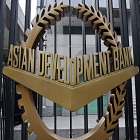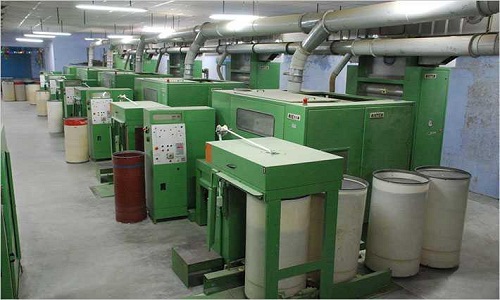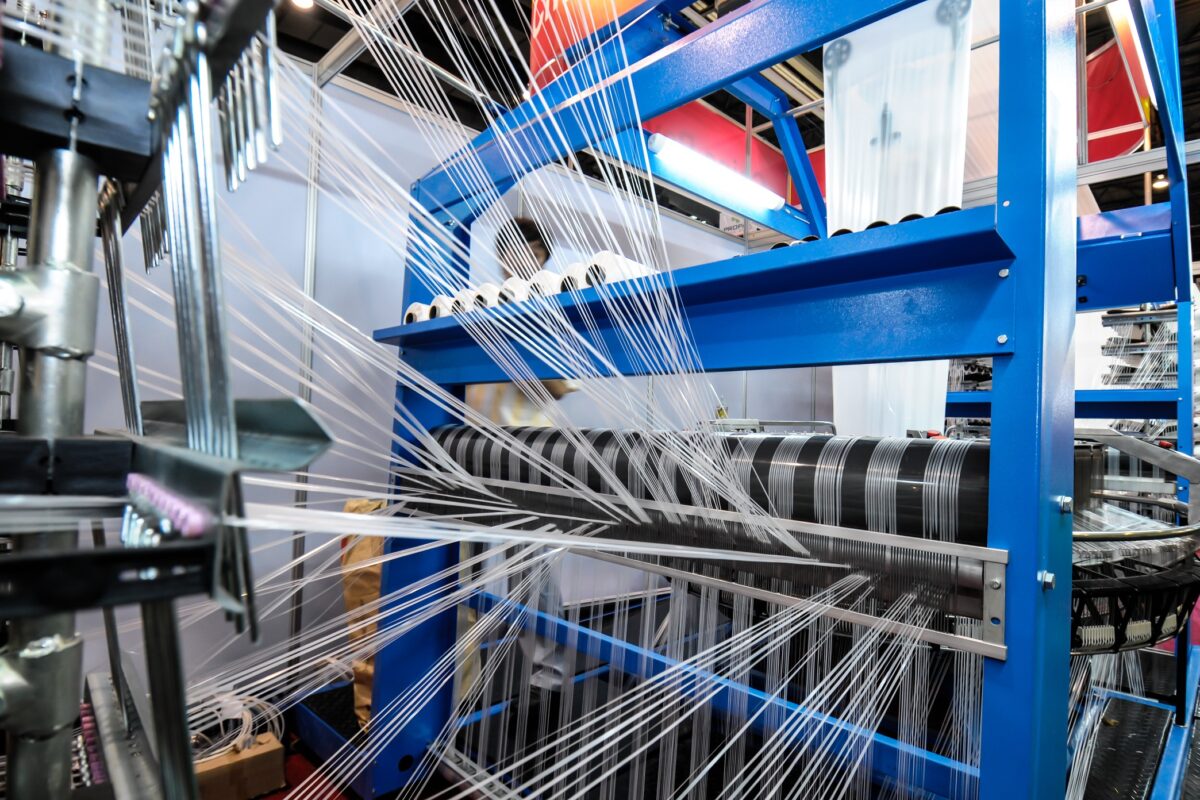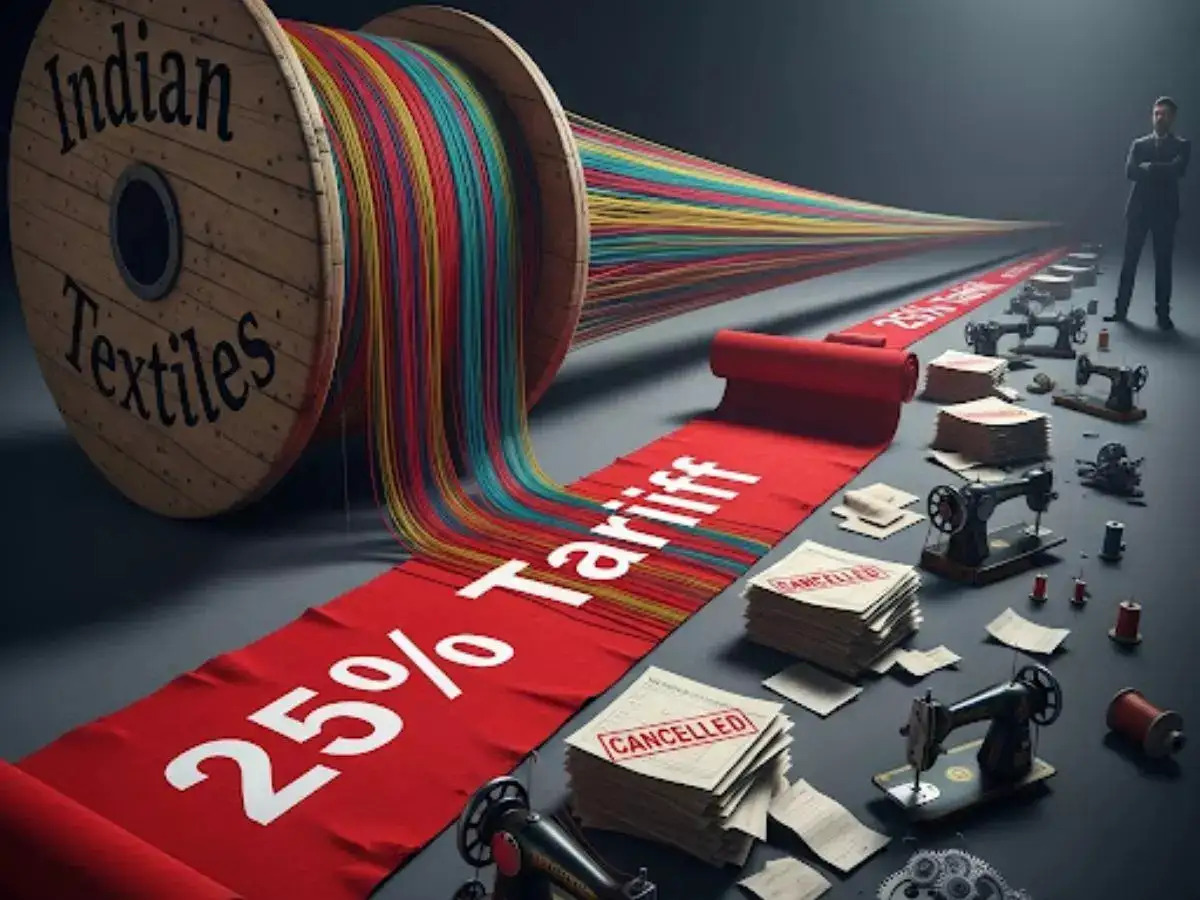FW
Businesses in Vietnam prefer the free trade agreement with the EU than the Trans Pacific Partnership. They feel the EU agreement can bring them bigger benefits and gives more favorable conditions in government procurement as it allows procurement deals in localities as well.
Since the EU offers attractive schemes for Vietnam, in return, Vietnam is also willing to give preference to the EU. Under the free trade agreement, the EU will remove 85 per cent of the tariffs imposed on Vietnamese goods as soon as the agreement takes effect. The EU has offered attractive provisions to Vietnam regarding many production fields. For example, it agreed to remove all import tariffs on Vietnam’s textile and garment products within seven years. The tariffs on footwear and shoes will also be completely removed by the EU.
The EU has also promised strong support to Vietnamese farm produce to approach the EU market. Vietnam’s fish products, for example, will be freed of tariffs within three years. Moreover unlike TPP, EU does not set the yarn-forward principle for Vietnam’s garment exports. Instead, the fabric-forward principle is applied. The EU agreement and the TPP are expected to take effect in one or two years.
Australian International Sourcing Expo will be held from November 14 to 16, 2017. Designed to connect New Zealand and Australian trade buyers with a wide range of suppliers and manufacturers from around the globe, the expo will be attended by more than 500 exhibitors displaying their wares.
With a focus on apparel, accessories and textiles, exhibitors representing key sourcing hot spots such as China, India, Bangladesh, and Hong Kong will attend the expo and showcase their respective industry’s appeal to foreign business and investment. The expo provides an organised way for international sourcing, learning and networking for a wide range of industry professionals from around the world. It is essential for anyone in the apparel, accessories and textiles industry.
It is not only an opportunity to meet some of the world’s most respected industry professionals but a chance to discuss larger issues facing the industry today, such as global trends and logistical challenges. The show also provides the opportunity for visitors to collect valuable market insights and business tips as well as comparing production capability and costs, diversifying their supply chain, and sourcing new business.
The event will feature the latest in men’s wear, women’s wear and children’s wear on display, along with footwear, accessories, home textiles, jewelry and travel goods.
ITM Texpo Eurasia took place in Turkey from June 1 to 4, 2016. The exhibition covered areas like yarns, knitting, weaving, dyeing, printing, finishing and hosiery machines, sub-industries and chemicals. More than 1,000 textile technology producers presented their latest models in operation.
Textile machinery specialists presented their innovations. Shima Seiki, a leading computerized knitting machine manufacturer, featured its flagship Mach 2XS whole garment knitting machine with original slide needle on four needle beds and spring-loaded moveable sinkers as well as the compact SW G091 N2 for producing smaller whole garment items and accessories.
Italian hosiery knitting machine builder Busi Giovanni presented the company’s J-Terry and Busi medical terry pantyhose single cylinder sock machines. Groz-Beckert, a leading provider of industrial machine needles, precision parts and fine tools, showcased its circular knit exhibit, a circular knitting machine replica made of acrylic glass that visualized 14 different knitting technologies from gauge E10 to E50.
Monforts presented a wide range of advanced innovations and developments. Karl Mayer exhibited its new HKS 4-M EL tricot machine and the Size Box VSB innovative sizing technology.
ITM Texpo saw the sector’s leading textile technology representatives and welcomed 49,730 visitors. It provided a great opportunity to foreign and local participants to present their new technologies.
Major users of cotton the world over are failing to source sustainable cotton on a large scale. Despite the significant progress made by a few leading companies, there is significant room for improvement in sourcing and reporting of sustainable cotton. The last few years have seen an increase in attention for sustainable apparel from both consumers and market, which has created momentum for initiatives focused on promoting the sustainable production of cotton. Under right conditions, organic cotton production, regarded as the gold standard for sustainable cotton production, delivers impressive benefits to the farmer, the environment, and the industry as a whole.
Organic Cotton Accelerator (OCA) is a new collaborative platform which strives to address the issues the sector is facing, by coordinating actions that enable improvements in the organic cotton farmer’s business case, appropriate integrity, and increased security of supply.
Organic Cotton Accelerator is committed to building a prosperous organic cotton sector which benefits everyone—from farmer to consumer. Its aim is to build a fair, robust organic cotton market with appropriate integrity at every relevant level, while growing supply and demand. This momentum for sustainable apparel has motivated several sustainability front-runners in apparel to join forces with OCA.
Klaus Huneke is the new president of Euratex for new two years beginning January 2017. Euratex is the European apparel and textile confederation.
Huneke, an experienced industrialist, has wide international experience in the textile industry. He made a remarkable career at Heimbach, a large technical textiles producer in Germany. Having started his path as an engineer in the petrochemical industry in 1990s, he joined Heimbach where he was a CEO until his retirement.
Huneke has been president of the German textile employer’s association since April 2000. He has also been actively involved in the representation of the textile and clothing industry at the European level, acting as a board member and vice-president treasurer of Euratex.
As Euratex president, his work will be directed in three strategic areas: trade and industrial policy, innovative industry and responsible businesses. Huneke has an ambitious plan for his upcoming presidency. He believes Euratex shall continue being a bridge between the companies in the textiles sector and European institutions, namely the European Commission and the European Parliament.
Euratex has also nominated Serge Piolat (UIT, France) and Rusen Cetin (ITKIB, Turkey) as vice-presidents and Alberto Paccanelli (SMI, Italy) as its vice-president treasurer for the upcoming two-year term.
Egypt’s cotton exports fell by 54.2 per cent in the second quarter of the agricultural season 2015-2016. Cotton exports between December 2014 and February 2015 reached 112.7 quintals compared to 246 quintals in the same period last year.
The decline in exports is attributed to a decline in the amount of cotton harvested this year. Cotton crop, which has been one of Egypt’s leading agricultural export crops, has seen a number of crises over the past years leading to a deterioration in its quality and decline in its exports.
Last month, Egypt agreed to set a guarantee price to buy cotton from local farmers so as to enable farmers to earn higher profits. Suggestions on how to enhance cotton cultivation methods have been invited. Local consumption of cotton declined to reach 76.4 thousand quintals while during the same period last year local consumption reached 175.8 thousand quintals. Spinning and weaving in Egypt depend primarily on cotton.
The largest importer of Egyptian cotton in the global market is India. Egypt produces medium long staple, long staple and extra long staple cotton. These cottons produce a wide range of yarn counts needed for the production of fine textiles.
"A study conducted by Asian Development Bank (ADB) on technology upgradation from a developing country’s point of view observes: technology upgrading depends on the extent of assimilation of foreign technologies, the availability of skilled labour and government policies that encourage investments in skills and technology."

A study conducted by Asian Development Bank (ADB) on technology upgradation from a developing country’s point of view observes: technology upgrading depends on the extent of assimilation of foreign technologies, the availability of skilled labour and government policies that encourage investments in skills and technology. Export promotion strategies of the government tend to overlook this aspect, and a more nuanced approach to global value chain activity may help the industry more, the working paper series of ADB South Asia on ‘Upgrading in the Indian Garment Industry’ added. The textile industry is one of the most important sectors as it accounts for about 14 per cent to the country’s total industrial production, 4 per cent of GDP, and 13 per cent of total export earnings. It is the second most essential sector in terms of employment, after agriculture. It provides direct employment to about 45 million and indirect employment to 60 million people (Technopak 2012). India is amongst the top 15 exporters of textiles and clothing in the world. In 2013, India’s textile and apparel exports amounted to $40.2 billion (57 per cent textiles and 43 per cent apparel).
India, a strong global sourcing point

From the apparel industry, there are many companies catering to global value chains, and also as selling in the domestic market. Firms in the Mumbai cluster have been selling half of their output to the domestic market and half to the global market. As per the ADB study, the global value chain has two types of firms: supplying to the European Union (EU) and the United States (US), and supplying to the Middle East market (or countries in South America). Most medium- and large firms in Delhi-NCR cater to the global value chains that are being sold in the EU and the US, while firms in Tirupur cater to both EU-US and Middle East. Other newer markets that were being explored include Japan, South Korea, Singapore, Latin America, South America, and East, highlights the study.
In the ADB study, various differences in organising global trade chain were given but the differences in domestic value chain were more interesting. The domestic value chain in India is organised in a different manner from the global value chains, and has two segments: first catering to lower and middle income market in the country; the other is pertaining to export market quite similar to the global trade chains, as per the paper. The recent emergence of Regional Value Chain was also highlighted to show increasing integration of economies as a single world market. Some firms were reported to have production linkages with Bangladesh and the products being sold to Bangladesh include traditional clothing (sherwani, jodhpuri etc.) as well as ladies’ T-shirts. Some of the advantages cited in the case of the regional value chain included lower labor costs; lower costs for sourcing inputs; lower energy costs; ease of availability of labour.
ADB Survey observations
A sample of 97 firms (34 from Tirupur, 37 from Mumbai, 1 from Surat, and 25 from the Delhi NCR) was carried out to reach certain conclusion about product, process and functional upgrading. Product upgrading that involves steps taken to upgrade product quality, introduction of new fabrics and raw materials, and reduction in reworking rates was the least commonly reported type, followed by functional and process. Product upgrading was highest within the domestic category, in Delhi NCR, and in large firms. Functional upgrading, involving upgradation through design, marketing, and branding was highest in exporters, firms in Delhi NCR, and the largest firms but still 5 firms out of these 97 firms (approximately 5 per cent) did not undertake any such functional upgrading. Process upgrading taking place through the use of new production machinery, worker training, reduction in delivery time, total quality programs, introduction of new organisational approaches, improvements in the production process, and increased use of computer programs for business purposes was highest among firms that both export and sell domestically, in Tirupur, and among the medium-sized firms.
Lack of skilled labour
The paper also highlighted the differences within the clusters with respect to upgradation. Out of all the firms the highest average score was recorded by the Mumbai cluster, followed by Delhi and Tirupur. The majority reported lack of skilled labour, access to technology, and finance as major obstacle to upgrading. Some observed the duty drawback system needs to be more streamlined to reduce delays in receiving payments. Lack of logistics systems and inadequate infrastructure were cited as major reasons for delays in exporting.
Although little or no upgrading is common in domestic firms, firms in Delhi NCR and large firms but this could be because all the firms in Delhi NCR sample are exporters and the market to which the firm supplies is important, too, since a low level of upgrading was reported in firms with quasi-hierarchical structures.
Five export associations in Multan have demanded the Pakistan government to issue a notification regarding zero-rated regime for export-oriented textile industry. The demand came from Syed Muhammad Aasim Shah Chairman APBUMA, Khawaja Muhammad Ilyas (APTMA) Nawab Shehzad Ali Khan Chairman of PCGA, Ex-Presidents of MCCI Shahid Nasim Khokhar, Khawaja Muhammad Yousaf, Atta Shafi Tanvir Senior Vice President of MCCI, Khaliq Qandeel Ansari of All Pakistan Power Looms Association, Zulfikar Nasuha President DGCCI, Muhammad Iftikhar, Chaudhry Abdul Jabbar and Zulfikar Ali.
They have asked the FM and the FBR chairman to immediately issue the notification for zero-rating of five export sectors so that exporters could make shipments as per announcements in the federal budget. They said that value-added export sectors were waiting for the issuance of the SRO or notification of the decision, as they had to prepare export shipments as per the rule ‘no-payment, no-refund.’
They said that the government had accepted the demands of the textile sector regarding SRO.1125. They demanded that the government would abolish 3 per cent to 5 per cent sales tax on different stages which would be replaced with zero-per cent sales tax in the budget.
The associations further said, this decision would boost Pakistani export, in order to get maximum results (i.e.; 20 to 25 per cent increase), government should immediately release refund payments against Sales Tax, duty drawback and drawback on local taxes and levies (DLTL) as well as bring down tariff of electricity, gas and water to boost exports and give incentives to export as per other competitor countries.
A visiting Nepali delegation in the US for the Joint Nepal-US Trade and Investment Framework (TIFA) Council meeting, requested the US to adopt further flexibility in the duty-free market access facility the country has offered to Nepali readymade garment products. Even though the US has offered the facility to 66 garment items under the Trade Facilitation and Trade Enforcement Act, Nepali garment manufacturers are disappointed that most of the items listed under the facility are not produced in Nepal.
Nepali garment sector suffered the worst disaster because of the lack of competitiveness, after the quota system was removed in 2005. In 2000-01, Nepal’s garment exports reached an all-time high of Rs13.12 billion, with the US accounting for 86.49 per cent of the exports. But it slumped to Rs5.28 billion in fiscal 2014-15.
Representatives of the Garment Association of Nepal also participated in bilateral meeting and they raised their concerns, said Kailash Raj Pokharel, economic consular at the Nepali embassy in the US.
A member of the Nepali team present in the meeting said the US side advised that Nepal utilise the available facility for greater benefit of the garment sector for now. They were of the view that there remains the possibility of resistance in the US if the product list was extended, said the Nepali delegation member.
Tracing the trend in recent years, export proportion of cotton blended yarn in total cotton yarn exports increased in the first half of year but declined in the second half. Exports of cotton blended yarn were rising on the whole in recent years except for some months in 2013. Proportion of cotton blended yarn in total cotton yarn exports reached 25.9 per cent in 2013, around 29.2 per cent in 2014, 36.4 per cent in 2015 and around 34.6 per cent in Jan-Apr, 2016, and market share in Jan-Apr, 2015 was around 31.5 per cent.
Low-count variety was mainly cotton blended yarn exported, and exports of carded descriptions were bigger than combed one, but exports tended to high-count descriptions. Exports of carded cotton blended yarn below 8.2S declined by 5 per cent compared with the same period of last year, and proportion of combed 8.2-25S/1 and 8.2-25S/2 increased by 2 per cent and 3 per cent respectively. As for combed cotton blended yarn, proportion of combed 25-30.4S and 30.4-46.6S both increased by 1 per cent, while that of combed 8.2-25S/2 declined by 1 per cent.












